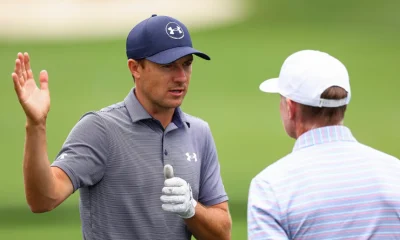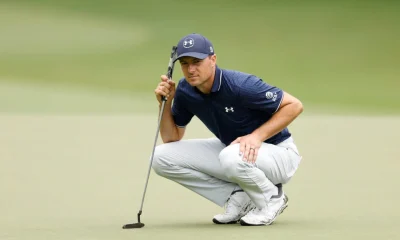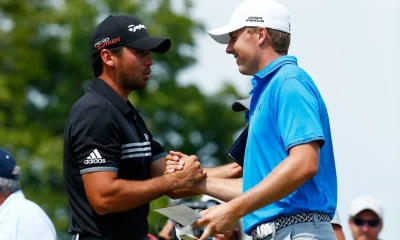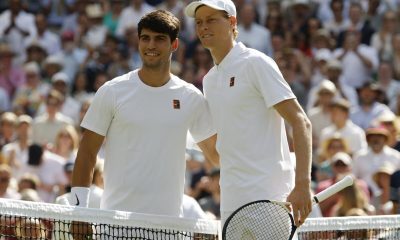Entertainment
The revelations this week by Andy Murray that he’s not enjoying tennis at the moment came as a shock to no one.
A run of defeats in recent months including his latest which was a loss to Australian, Alex de Minaur having been 5-2 up in the final set, is far below the standard the two-time Wimbledon champion expects of himself.
I don’t think there’s anyone watching Murray who’s not absolutely desperate to see him return to the form that saw him win multiple grand slam titles and reach the top of the world rankings. Or if not that level, at least the level he clearly believes he can return to.
Yet, for now at least, he’s stratospheres away from that.
The thing with many of Murray’s recent losses including to De Minaur last week, Stefanos Tsitsipas at Wimbledon this summer, plus more than a few of his other losses to players that in his hey-day, he’d have annihilated, is that they follow an almost identical pattern.
Murray’s metal hip is well-documented but his recent woes have not been down to physical issues.
Yes, it’s true he can’t move as fluently as a 36-year-old as he did as a 26-year-old, but who can? And he still moves exceptionally well around a tennis court.
Rather, it’s a tennis issue that’s holding him back.
Countless times this season, Murray has played very well to get within touching distance of the finishing line in matches by playing clinical and measured but attacking tennis. But instead of continuing as he had been playing to close the match out, he becomes passive. Instead of going for his shots, his tactic becomes purely not to miss.
And, at the level at which he’s playing, that’s not enough.
De Minaur is certainly not as good a player as Murray, but he’s good enough that he’s not going to just hand the win to Murray on a plate.
In Murray’s prime, the Scot had an aura that pervaded almost all of his matches and his opponents.
Murray, and this is true of so many of the great tennis players, won points, games and sometimes matches purely due to his reputation rather than the level of tennis he was playing.
When Murray was at his peak, players knew his defence and his counter-attack was so astonishingly good that they had severe reservations about attacking him at all.
Players would second-guess and end up tying themselves in knots trying to predict what Murray would or wouldn’t do because frankly, he could do anything when he was at his best.
But now, that aura is gone.
In the previous generation, the one inhabited by not only the big four of Murray, Roger Federer, Rafa Nadal and Novak Djokovic but also Juan Martin del Potro, Richard Gasquet, Gael Monfils, David Ferrer et al had spent not only much of their professional career losing to Murray but, in several cases, also their junior career.
And however much an athlete may insist they can put previous defeats out of their mind, it’s invariably not true. Multiple defeats generate baggage and more often than not, that baggage remains with a player and impacts how they play the next time they take to the court against said opponent.
Murray had ensured that so many, if not all, of his opponents from the previous generation has at least some degree of accumulated baggage against him.
This current generation of tennis players, however, has none of that baggage.
It appears that, without exception, this wave of players look at Murray as a formerly great but currently only good tennis player.
He does not have anything like the aura that surrounded him a decade ago and that’s showing in his results.
It had appeared that Murray’s body was going to, ultimately, fail him and force him into retirement.
Now, however, the exact opposite is likely to be true; that it’s not going to be his body but rather, his mind that’s going to be the deciding factor when it comes to deciding a retirement date.
Murray, throughout his return from hip surgery, has consistently emphasised that his love for his sport is what was keeping him going.
-
Entertainment2 years ago
“Novak Djokovic and Wife Joyfully Announce Third Pregnancy, Unveil Baby’s Gender and Due Date”
-

 Entertainment1 year ago
Entertainment1 year agoCharley Hull Posts Her Most Beautiful Picture EVER with a Very Cheeky Attitude
-

 Entertainment10 months ago
Entertainment10 months agoCheck Out Hot Stunning Photos of Paige Spiranac: Golf’s Glamorous Queen
-

 Entertainment1 year ago
Entertainment1 year agoBikini Queen Charley Hull Steals the Spotlight with Her Stunning Beach Looks
-

 Entertainment1 year ago
Entertainment1 year agoQueen Lexi Thompson Steals the Spotlight with Her Lovely Beach Looks
-

 Entertainment10 months ago
Entertainment10 months agoLindsey Vonn stuns in this latest see-through outfit… See photos
-

 Entertainment11 months ago
Entertainment11 months agoOlympic Skier Lindsey Vonn Flaunts Incredibly Fit Physique and Shares Her Fitness Secrets
-

 Entertainment10 months ago
Entertainment10 months agoPhotos: Lexi Thompson says her ‘tan lines need some work’, shares adorable photo with ‘tanning bud’













